Table of Contents
ToggleIn a world where software bugs can turn a seamless experience into a digital nightmare, software quality assurance (QA) stands as the unsung hero. Picture this: a user clicking on a shiny new app, only to be greeted by a glitch that sends them spiraling into frustration. That’s where QA swoops in like a caped crusader, ensuring everything runs smoothly before it reaches the end user.
Overview of Software Quality Assurance
Software quality assurance (QA) plays a crucial role in delivering reliable applications. Its main goal focuses on preventing software bugs, ensuring a smooth user experience.
Definition and Importance
Software quality assurance encompasses systematic processes that validate software products’ quality and performance. QA identifies defects before they reach users, making it essential for maintaining software reliability. Organizations prioritize QA to foster customer satisfaction, protect brand reputation, and minimize costly post-release fixes. Effective QA procedures reduce the risk of software failure and improve overall project success.
Key Objectives
Key objectives of software quality assurance include enhancing product quality, ensuring compliance with specifications, and facilitating continuous improvement. QA processes aim to prevent defects early in the development lifecycle and streamline testing efforts. Organizations utilize QA practices to optimize development time and resources, ultimately leading to more efficient workflows. By prioritizing these objectives, teams can consistently deliver software that meets high-quality standards.
Types of Software Quality Assurance

Software quality assurance encompasses various testing methods that organizations employ to ensure software reliability and performance. Understanding these methods helps teams select the right approach for their projects.
Manual Testing
Manual testing involves human testers executing test cases without automation. Testers carefully evaluate the application, ensuring all functionalities work as intended. They verify the user interface, usability, and overall user experience. Critical observations can emerge from hands-on testing, revealing issues that automated scripts might overlook. Manual testing allows for exploratory testing, where testers identify unique scenarios. This method often proves beneficial in early stages of development when requirements may still evolve. The insights gained from manual testing contribute significantly to improving software quality.
Automated Testing
Automated testing uses specialized tools to execute predefined test cases automatically. This approach increases testing efficiency and consistency, reducing human error. Automated tests can run tests repeatedly with minimal intervention, which is ideal for regression testing. Continuous integration/continuous deployment (CI/CD) environments benefit greatly from automated testing as it speeds up the testing process. Various testing frameworks exist, accommodating different languages and types of applications. Additionally, automation complements manual testing by handling repetitive tasks, freeing up testers to focus on complex cases. Overall, automated testing significantly enhances the software quality assurance process.
Key Components of Software Quality Assurance
Software quality assurance encompasses several critical components that ensure high-quality software. Each component plays a vital role in the overall QA process.
Test Planning
Test planning involves defining the testing approach and identifying the required resources. This stage includes outlining test objectives, selecting necessary testing tools, and creating a detailed schedule. Important documents, such as test plans and risk assessments, guide the entire process. Planning also prioritizes test cases based on their impact, ensuring that the most critical functionalities receive appropriate attention. Clear communication among team members enhances collaboration and establishes a shared understanding of testing goals.
Test Design
Test design focuses on creating the actual test cases that validate the software’s functionality. This stage identifies inputs, execution conditions, and expected results essential for effective testing. Employing techniques like equivalence partitioning and boundary value analysis ensures comprehensive coverage of scenarios. Additionally, designing reusable test cases promotes efficiency, allowing teams to adapt cases for future releases. Documentation at this stage is crucial, as well, helping to maintain clarity on test logic and requirements that guide execution.
Test Execution
Test execution involves running the planned test cases against the software to verify its performance. Results from this process reveal system behaviors and highlight any defects that need attention. Testers log defects in tracking systems for efficient monitoring and management. Conducting regression tests periodically guarantees that new changes do not adversely affect existing features. Following execution, teams analyze outcomes to assess overall quality and make informed decisions about the software’s readiness for release. Consistent execution practices contribute significantly to maintaining software reliability.
Tools and Technologies in Software Quality Assurance
Software quality assurance relies heavily on various tools and technologies to improve testing efficiency and accuracy. These resources enhance the QA process, ultimately leading to higher software quality.
Popular QA Tools
Commonly used QA tools include Selenium, JUnit, and TestComplete. Selenium automates web applications for testing and supports multiple programming languages. JUnit focuses on unit testing, providing a framework for writing and executing tests in Java. TestComplete offers powerful and user-friendly automated testing capabilities, facilitating both desktop and mobile application testing. These tools enable teams to execute test cases effectively and streamline the quality assurance process.
Emerging Technologies
Emerging technologies such as artificial intelligence and machine learning significantly influence software quality assurance. AI-driven testing tools enhance test automation through intelligent algorithms that adapt to evolving software environments. Machine learning enables predictive analytics, identifying potential defects before they occur. These technologies support continuous testing and help teams respond quickly to new challenges. As organizations embrace these advancements, they will likely experience improved efficiency and more reliable software products.
Best Practices for Effective Software Quality Assurance
Effective software quality assurance relies on established practices that enhance reliability and performance. Implementing these practices supports high-quality software delivery.
Continuous Testing
Continuous testing integrates testing throughout the development lifecycle. This approach enables teams to identify defects early, reducing downstream costs. Automation tools streamline testing processes, ensuring immediate feedback for developers. Teams that adopt continuous testing often increase the frequency of releases, maintaining product quality during fast-paced development. Real-time insights from testing help in making prompt decisions, allowing for rapid iterations.
Collaboration Between Teams
Collaboration between development and QA teams fosters a cohesive approach to software quality. Open communication channels encourage sharing of knowledge and insights, leading to better understanding of requirements. Jointly conducted meetings provide platforms for discussing priorities, ensuring alignment between teams. This teamwork enhances problem-solving skills and accelerates defect resolution. When both teams work together, it significantly boosts the overall quality and effectiveness of the software product.
Software quality assurance is vital in delivering high-quality applications that meet user expectations. By implementing effective QA practices organizations can significantly reduce the risk of defects and enhance overall user satisfaction. The combination of manual and automated testing methods ensures comprehensive coverage and efficient workflows.
Embracing advanced tools and technologies further strengthens the QA process enabling continuous improvement and faster release cycles. Prioritizing collaboration between development and QA teams fosters a culture of quality that benefits the entire software development lifecycle. Ultimately investing in software quality assurance not only safeguards the user experience but also drives long-term success for businesses in a competitive market.






